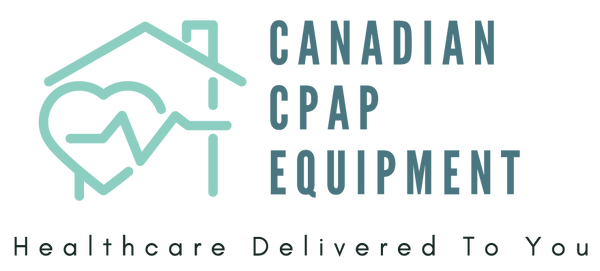Navigating a health condition like sleep apnea can feel overwhelming, especially when you're first diagnosed. From understanding the symptoms to choosing the right treatment and maintaining long-term health, each step of the journey requires information and support. This comprehensive guide serves as your roadmap, bringing together the key insights we have shared over the past month to help you understand, manage, and thrive with your condition. If you are beginning this journey, consider starting with a home sleep apnea test a convenient and accurate first step toward effective diagnosis and treatment.
I. Understanding Sleep Apnea: Recognizing the Signs
Sleep apnea is more than just snoring; it's a serious sleep disorder characterized by repeated interruptions in breathing during sleep. These pauses lead to oxygen deprivation and fragmented sleep, impacting your health and quality of life. While loud snoring is a common symptom, look out for other indicators:
- Excessive Daytime Sleepiness: Feeling tired even after a full night's sleep.
- Morning Headaches: Waking up with a headache.
- Gasping or Choking During Sleep: Often witnessed by a bed partner.
- Irritability and Mood Changes: Due to chronic sleep deprivation.
- Difficulty Concentrating or Memory Problems: Impaired cognitive function.
There are two main types: Obstructive Sleep Apnea (OSA), caused by a physical airway blockage, and Central Sleep Apnea (CSA), where the brain fails to signal breathing. OSA is far more common.
II. The Diagnostic Process: Getting Tested
Getting an accurate diagnosis is the crucial first step. While traditional in-lab sleep studies (polysomnography) are comprehensive, at-home sleep apnea tests (HSATs) like the WatchPAT ONE offer a convenient and highly accurate alternative for diagnosing OSA.
Benefits of At-Home Testing:
- Convenience and Comfort: Test in your own bed, maintaining your natural sleep routine.
- Accessibility: Reduced wait times and no need for travel.
- Cost-Effectiveness: Generally more affordable than in-lab studies.
- High Accuracy: Clinically validated devices provide reliable results for OSA diagnosis.
Understanding Your Results:
Your WatchPAT ONE report will include key metrics:
- Apnea-Hypopnea Index (AHI): The average number of breathing interruptions per hour of sleep, used to classify severity.
- Oxygen Desaturation Index (ODI): The number of times your blood oxygen drops significantly per hour.
- Minimum Oxygen Saturation (Min SpO2): The lowest oxygen level recorded.
- True Sleep Time (TST): The actual time you spent asleep, ensuring accurate calculations.
These results are interpreted by a sleep-trained respirologist who will discuss your diagnosis and recommend a personalized treatment plan.
III. Treatment Options: Finding Your Solution
For most individuals with OSA, Continuous Positive Airway Pressure (CPAP) therapy is the most effective treatment. It involves a machine that delivers pressurized air through a mask to keep your airway open during sleep.
CPAP Therapy:
- How it Works: Gentle air pressure acts as a pneumatic splint, preventing airway collapse.
- Benefits: Eliminates apneas, restores restorative sleep, reduces daytime sleepiness, and lowers health risks.
- Adjustment: Requires an adjustment period; patience and communication with your provider are key.
Choosing Your CPAP Mask:
Mask comfort is crucial for adherence. Main types include:
- Nasal Pillow Masks: Minimalist, direct to nostrils.
- Nasal Masks: Covers the entire nose.
- Full-Face Masks: Covers both nose and mouth, ideal for mouth breathers.
Work with your provider to find the best fit for your breathing style, sleeping position, and facial structure.
Beyond CPAP:
Other options exist for those who cannot tolerate CPAP or have milder conditions:
- Oral Appliances: Custom-made dental devices that reposition the jaw/tongue.
- Lifestyle Modifications: Weight loss, positional therapy, avoiding alcohol/sedatives.
-
Surgical Interventions: Procedures to remove tissue or reposition structures (e.g., UPPP, Genioglossus Advancement, Hypoglossal Nerve Stimulation).
IV. Living with Sleep Apnea: Ongoing Management and Support
Managing sleep apnea is an ongoing commitment that significantly improves your long-term health and quality of life.
Maintaining Your Equipment:
Regular cleaning and replacement of CPAP components are vital for hygiene and effectiveness:
- Daily: Wash mask cushion/pillows and humidifier water chamber.
- Weekly: Wash tubing and headgear.
- Regular Replacement: Replace masks, filters, and tubing according to schedule.
The Importance of Follow-Up Care:
Regular consultations with your sleep-trained respirologist are essential to:
- Optimize treatment effectiveness and adjust settings.
- Address adherence challenges and equipment issues.
- Monitor health improvements and manage co-morbidities.
- Provide ongoing education and support.
Sleep Apnea and Your Health:
Untreated sleep apnea is linked to serious health complications:
- Cardiovascular Problems: High blood pressure, heart attack, stroke, heart failure, arrhythmias.
- Type 2 Diabetes: Due to insulin resistance and hormonal imbalances.
- Weight Management Challenges: Sleep deprivation disrupts appetite-regulating hormones.
- Driving Risks: Excessive daytime sleepiness significantly increases the risk of drowsy driving accidents.
Special Considerations:
- Sleep Apnea in Children: Often caused by enlarged tonsils/adenoids, symptoms can be behavioral or developmental.
- Travel with CPAP: Plan ahead for airline regulations, power, and water. Always carry your CPAP as a medical device.
- Provincial Coverage: Understand how coverage varies across Canadian provinces and explore private insurance options.
Partner Support:
Partners play a crucial role in recognizing signs, encouraging diagnosis, and supporting treatment adherence. Educate yourself, be patient, and celebrate improvements together.
V. Looking Ahead: The Future of Sleep Apnea Care
The field of sleep medicine is continuously advancing. Expect:
- Enhanced At-Home Testing: Smaller, more sophisticated wearables and AI-powered diagnostics.
- Smarter CPAP Machines: More advanced algorithms and connectivity.
- Personalized Therapies: Tailored oral appliances and targeted neuromodulation.
- Integrated Care Models: Seamless collaboration among healthcare providers.
Conclusion
Your sleep apnea journey is a path towards better health, increased energy, and an improved quality of life. By understanding your condition, embracing effective treatment, and committing to ongoing management, you can take control of your sleep health. We at Canadian CPAP Equipment are here to support you every step of the way, providing convenient at-home testing and expert medical interpretation to help you achieve restorative sleep.
Next Steps: As we conclude our 30-day content journey, we'll recap the key takeaways and look ahead to what's next for Canadian CPAP Equipment.

